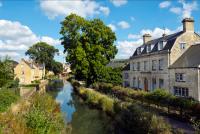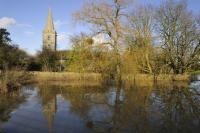Gloucestershire Final Recommendations
Explore our final proposals for new divisions in Gloucestershire
LGBCE
Explore your area
In the map below we discuss each area of the county. This detail is also available in our pdf report.

Cheltenham
We received several submissions that related to our proposals in Cheltenham. The majority of these were concerned with the two divisions of St Paul’s & Pittville and Swindon & Prestbury.

Cotswold
We received a small number of submissions regarding divisions in Cotswold. The majority of these submissions were regarding the names of divisions.

Forest of Dean
We received no submissions regarding boundaries or names of divisions in the Forest of Dean during the draft recommendations consultation.

Gloucester
We received very few comments regarding proposed divisions in Gloucester.

Stroud
We received a large number of submissions regarding our proposed divisions in Stroud District. These submissions were principally concerned with two key issues: the inclusion of Stroud Trinity district ward in the rural Bisley & Painswick division (as opposed to Stroud Central division) and a proposed division boundary separating the neighbouring parishes of Owlpen and Uley, which were included in Dursley and Wotton-under-Edge divisions, respectively.

Tewkesbury
We received very few submissions regarding the draft recommendation proposals in Tewkesbury. Most that we did receive came from parish councils.
Cheltenham
We received several submissions that related to our proposals in Cheltenham. The majority of these were concerned with the two divisions of St Paul’s & Pittville and Swindon & Prestbury.
All Saints & Oakley, Battledown & Charlton Kings, Benhall & Up Hatherley, Charlton Park & College, Hesters Way & Springbank, Lansdown & Park, Leckhampton & Warden Hill, and St Mark’s & St Peter’s
We received very few submissions regarding any of these proposed divisions. Councillor Willingham, the county councillor for St Mark’s & St Peter’s, supported the draft recommendations for that division, noting the logic of aligning its boundaries to new ward boundaries for St Mark’s and St Peter’s Cheltenham borough wards.
We consider that the draft recommendation divisions here meet our criteria, and therefore propose to retain them as our final recommendations.
Pittville & St Paul’s and Prestbury & Swindon Village
Almost all of the submissions received in Cheltenham were regarding the two proposed divisions of St Paul’s & Pittville and Swindon & Prestbury. These were the only divisions we proposed which differed from the existing ward pairings in the borough; we were persuaded that they offered a better balance of forecast electors and that the wards comprising the proposed divisions had satisfactory links.
The Cheltenham Constituency Labour Party (‘Cheltenham CLP’) made comments in support of the draft recommendations, which were principally based upon its suggestions during the initial consultation. It additionally suggested revised names of Prestbury & Swindon Village, Pittville & St Paul’s, and Benhall, Fiddlers Green & Up Hatherley so that each division is presented alphabetically and reflects the full borough ward names.
We received several submissions in opposition to the draft recommendations, including from Alex Chalk MP (Cheltenham), Prestbury Parish Council, and three county councillors representing divisions in Cheltenham. Local respondents suggested that there was limited evidence of shared community in a Cheltenham ‘Outer Division’ (the Swindon & Prestbury division we proposed as part of our draft recommendations) and that the existing Pittville & Prestbury division represents a historically linked area with commonality, including in the administration and organisation of Cheltenham Racecourse event days.
The Conservative Group also opposed the draft recommendations for these divisions, for similar reasons to those given by local residents. It put forward an alternative scheme to preserve the principle of the current Pittville & Prestbury and St Paul’s & Swindon divisions. It proposed a Pittville & Prestbury division comprised of Pittville ward (minus the Winterborne Estate west of Tommy Taylors Lane) and Prestbury ward, and a St Paul’s & Swindon Village division comprised of the St Paul’s and Swindon Village wards, along with the addition of the Winterborne Estate. This estate comprises Denman Avenue, Jodami Crescent, Fort Leney Walk, Kauto Star Gardens, Little Owl Walk, Pas Seul Street, and Prince Regent Avenue.
We carefully considered this counter-proposal, but are not persuaded that it better meets our statutory criteria than the draft recommendations. We consider that it does not reflect convenient and effective local government, as the Winterborne Estate area identified as the element of Pittville ward to be transferred to the proposed St Paul’s & Swindon Village division has very limited internal connectivity to the rest of that division. The only access point for the residential roads of the estate is Prince Regent Avenue, which itself is only accessible via Tommy Taylors Lane at a junction in the middle of a non-residential green space. The Winterborne Estate is separated from Swindon Village ward by Wyman’s Brook to the north and the Midwinter Allotments to the west; and it is separated from St Paul’s ward by the Elmfield Play Park and Denman Avenue Playground to the south. Only pedestrian walkways link these neighbourhoods. We also consider that, while there is some shared community between Pittville and Prestbury wards, the governing and administration of Cheltenham Racecourse events is not a uniquely local issue concerning these neighbourhoods and is a responsibility shared across the local authority and by many of its county councillors.
We were persuaded by the name changes proposed by the Cheltenham CLP, except in the case of Benhall & Up Hatherley, as the full name of the proposed ward is Benhall, the Reddings & Fiddlers Green, which when combined with Up Hatherley would be too verbose when included in one division name. We propose to retain our draft recommendations for these two divisions, with amended names of Pittville & St Paul’s (originally St Paul’s & Pittville) and Prestbury & Swindon Village (originally Swindon & Prestbury).
Cotswold
We received a small number of submissions regarding divisions in Cotswold. The majority of these submissions were regarding the names of divisions.
A submission from the District Council supported the proposed division boundaries in Cotswold. It suggested new names for all eight divisions in the district, working on the principle that the existing names are often based on the largest settlement within a division, and that a broader geographic naming pattern would be more reflective of the divisions. It therefore proposed names of Mid Cotswold (for Bourton-on-the-Water & Northleach), Moreton, Stow & the Rissingtons (for Stow-on-the-Wold), North Cotswold (for Campden-Vale), North East Cirencester & Ermin (for Cirencester Beeches), South Cotswold (for South Cerney), South East Cotswold (for Fairford & Lechlade on Thames), Tetbury & West Cotswold (for Tetbury), and West Cirencester (for Cirencester Park). This submission subsequently received support from Cirencester Town Council as well as some local district and county councillors.
We are not persuaded that most of these names are better representations of the areas in question, or that they would mean more to local people. We note that the Cotswolds Area of Outstanding Natural Beauty (AONB) encompasses villages in Warwickshire to the north, Oxfordshire to the east, and Somerset to the south. The element of Cotswolds AONB within Gloucestershire also includes many areas outside of Cotswold District Council, including significant elements in Stroud and Tewkesbury. We do not consider that names using compass points to orient with a ‘Cotswold’ segment are geographically accurate and would be more likely to result in confusion than in greater understanding from local residents. Many rural divisions and wards throughout England are named after their largest settlement (or settlements), and we have no reason to believe that a diversion from this practice in Cotswold district would allow for more convenient and effective local government.
Of the above naming suggestions, we are only persuaded by Moreton, Stow & the Rissingtons, which we consider an accurate reflection of the three significant and recognisable population centres in the division. We propose to keep the other division names in Cotswold as originally proposed, expect for Cirencester North with Ermin (which is discussed further below).
Bourton-on-the-Water & Northleach, Campden-Vale, and Moreton, Stow & the Rissingtons
The Conservative Group proposed small adjustments in the north of Cotswold district. Specifically, it suggested transferring Broadwell Parish from Campden-Vale into Stow-on-the-Wold, and transferring the two parishes of Lower Slaughter and Upper Slaughter from Stow-on-the-Wold into Bourton-on-the-Water & Northleach.
In the first instance, it noted Broadwell’s geographic position situated between the towns of Moreton-in-Marsh and Stow-on-the-Wold; it suggested that Broadwell has strong economic and infrastructure links with Stow and is best suited to being represented by a councillor also responsible for Stow and Moreton to ensure convenient and effective local government. In the second instance, it argued that Lower Slaughter and Upper Slaughter both look more to Bourton-on-the-Water, a closer hub with better road access, than they do to Stow.
The submission also noted that this orientation of the three northernmost divisions in Cotswold results in better forecast electoral variances of 5%, 9%, and 11% for Bourton-on-the-Water & Northleach, Campden-Vale, and Stow-on-the-Wold, respectively. Finally, it proposed new names of North Cotswolds for Campden-Vale and Moreton & Stow for Stow-on-the-Wold, to better reflect the local areas.
In the draft recommendations report, we requested feedback from local residents regarding the proposal to include both Moreton district wards in one division rather than using the ward boundary which divides the town into east and west. We received a submission from a resident of Moreton-in-Marsh who suggested that the district ward boundary which divides the town is unsatisfactory.
We are persuaded by the Conservative Group’s suggestions here, other than the proposed names, as they result in a better balance of forecast electors while also reflecting community ties and road links on the ground.
We therefore propose slight amendments to these three divisions in line with the Conservative Group submission, namely: the transfer of Broadwell parish from Campden-Vale to Moreton, Stow & the Rissingtons (originally Stow-on-the-Wold), and the transfer of Lower Slaughter and Upper Slaughter parishes from Moreton, Stow & the Rissingtons to Bourton-on-the-Water & Northleach.
Cirencester North with Ermin and Tetbury
We received a submission from Councillor Twells, who previously responded to the initial consultation with an alternative scheme for Cotswold. In the draft recommendations consultation, he made a further submission which suggested a small adjustment to the boundary between the Cirencester Beeches and Tetbury divisions. Specifically, he argued that including Sapperton parish in Cirencester Beeches instead of Tetbury allowed for more convenient and effective local government, as well as a better reflection of community ties in the area. He additionally advocated for Cirencester Beeches to be renamed Cirencester North with Ermin division, reflecting that a greater proportion of the Ermin district ward would be within the division, and that The Beeches ward only comprises a small area of the whole division.
We received a petition in favour of Councillor Twells’ submission, with 76 residents agreeing with his proposals. Two other local respondents submitted comments in support of this arrangement.
We are persuaded by this submission, noting that it is more in line with district ward boundaries and seems to reflect local community ties, and consider that the proposed name of Cirencester North with Ermin means more to local people. We are therefore proposing a slight amendment to these two divisions as part of our final recommendations, with the transfer of the parish of Sapperton from Tetbury to Cirencester North with Ermin (originally Cirencester Beeches).
Cirencester Park, Fairford & Lechlade on Thames, and South Cerney
We received a submission from a local resident in Kempsford who suggested that we should take consideration of recently agreed parliamentary constituency boundaries in Cotswold, such that all of the Coln Valley ward (included in the North Cotswold constituency) could be within the same division.
We are not persuaded that providing coterminosity with parliamentary constituency boundaries is a reason in itself to amend our county division boundaries and accordingly have not made changes to our draft recommendations on this basis.
There were some suggestions that Cirencester Park division be renamed West Cirencester. Although there is no longer a Cirencester Park district ward, we note that Cirencester Park itself is still a significant and identifiable location to local residents, and that it geographically constitutes a large area of the division.
We are therefore proposing to retain our draft recommendation proposals for the divisions of Cirencester Park, Fairford & Lechlade on Thames and South Cerney (with unchanged names) as part of our final recommendations.
Forest of Dean
We received no submissions regarding boundaries or names of divisions in the Forest of Dean during the draft recommendations consultation.
Blakeney & Bream, Cinderford, Coleford, Drybrook & Lydbrook, Lydney, Mitcheldean, Newent and Sedbury
As we received no further detailed proposals or submissions concerning division boundaries or names in Forest of Dean district, we are proposing to retain our draft recommendations as part of our final recommendations here. These recommendations are the same as the existing divisions, which are all forecast to have good levels of electoral equality by 2029.
Gloucester
We received very few comments regarding proposed divisions in Gloucester.
Hempsted & Westgate and Tuffley & Moreland
The Conservative Group suggested swapping two small areas between the divisions of Hempsted & Westgate and Tuffley. It proposed transferring an area largely west of Podsmead Road from Hempsted & Westgate into Tuffley, and transferring an area west of Bristol Road and largely north of Robinson Road and Theresa Street from Tuffley into Hempsted & Westgate. It argued that composing the divisions in this orientation allows for a more natural separation in terms of geography, identify and clarity for electors. The Group identified Tuffley Park in the area west of Podsmead Road as an important space for local residents in Tuffley. It suggested that the proposed orientation of Tuffley in the draft recommendations was non-continuous and that its counter-proposal would resolve this anomaly. Finally, in recognition of its new boundaries, the submission suggested an alternative name of Tuffley & Linden to recognise the Linden community in the division.
The Conservative Group proposal was supported in a further submission by Richard Graham MP (Gloucester).
We received a submission from Councillor Pullen, the city councillor for Moreland ward, in support of the draft recommendation boundaries for Tuffley, but which suggested an alternative name of Tuffley & Moreland to represent both city council wards which comprise the division.
We are not persuaded by the Conservative Group’s submission in Gloucester. We do not consider that the proposed adjustments better reflect local communities, particularly regarding the specific boundaries suggested (which align to polling district boundaries) which we consider would divide communities along Manu Marble Way and Robinson Road. We note that in the initial consultation we received a submission from the Podsmead Big Local Partnership which provided good evidence for keeping Podsmead undivided as a ward within the Hempsted & Westgate division. The Conservative Group’s submission provides for less convenient and effective local government, as it divides two additional city wards which can otherwise be entirely contained within divisions, as in the draft recommendations.
We are persuaded by the submission from Councillor Pullen to change the division names. This is consistent with our decisions elsewhere where we have used a combination of ward names when naming divisions. We also note that the boundary between Tuffley & Moreland and Grange & Kingsway can be adjusted in a minor way, impacting no electors, to run along the northern extent of Randwick Park on Tuffley Lane to match the ward boundary here and achieve better coterminosity. We are therefore proposing to retain the draft recommendation division boundaries, with the amendment described at Randwick Park, for Hempsted & Westgate and a renamed Tuffley & Moreland (originally Tuffley).
Abbey, Barnwood & Hucclecote, Barton & Tredworth, Coney Hill & Matson, Grange & Kingsway, Kingsholm & Wotton, Longlevens, and Quedgeley
We received no additional submissions in Gloucester, and therefore we propose to retain draft recommendation boundaries and names in these divisions, with the exception of the small realignment between Grange & Kingsway and Tuffley & Moreland described above.
Stroud
We received a large number of submissions regarding our proposed divisions in Stroud District. These submissions were principally concerned with two key issues: the inclusion of Stroud Trinity district ward in the rural Bisley & Painswick division (as opposed to Stroud Central division) and a proposed division boundary separating the neighbouring parishes of Owlpen and Uley, which were included in Dursley and Wotton-under-Edge divisions, respectively.
The Conservative Group suggested an alternative arrangement of several divisions in the district in order to include the Stroud Trinity district and parish ward in Stroud Central division. It proposed the following transfers between divisions to achieve a Stroud Central division coterminous with the parish of Stroud, with all divisions within an acceptable forecast electorate variance: Brimscombe & Thrupp parish transferred from Bisley & Painswick to Minchinhampton, part of Chalford parish transferred from Minchinhampton to Bisley & Painswick, part of Rodborough parish transferred from Rodborough to Minchinhampton, part of Minchinhampton parish transferred from Nailsworth to Minchinhampton, Nympsfield parish transferred from Dursley to Nailsworth, Owlpen parish transferred from Wotton-under-Edge to Nailsworth, and Stroud Trinity transferred from Bisley & Painswick to Stroud.
The Gloucestershire County Council Labour Group (‘Labour Group’) made a submission addressing the challenge of proposing 11 divisions within Stroud. It noted that it had sought to identify a stronger set of divisions in the district, but had not been able to produce an alternative that better reflects our statutory criteria than what it originally proposed in the initial consultation.
We believe there are some strengths, and some weaknesses, to the Conservative Group’s scheme which we will discuss in more detail below. We note the concerns raised by the Labour Group in its submission, including regarding its suggested names of Stroud East and Stroud North rather than the Bisley & Painswick and Haresfield & Upton St Leonards divisions that we originally proposed.
Bisley & Painswick, Minchinhampton, Rodborough, and Stroud Central
We received over 150 submissions regarding these divisions, of which the vast majority were concerned with the proposal to include part of the town of Stroud in the otherwise largely rural Bisley & Painswick division. A smaller number were regarding the parish of Brimscombe & Thrupp, which respondents indicated was better aligned with Michinhampton division than with Bisley & Painswick.
We originally included Stroud Trinity ward in Bisley & Painswick in order to allow for a balanced forecast electorate variance, which is otherwise difficult to achieve in this part of the district. The significant response to this decision was principally concerned with including the town-oriented population of Stroud Trinity (as well as Brimscombe & Thrupp parish) in a large Bisley & Painswick area which has a more rural character, and to which Stroud Trinity is not well connected internally.
We received a submission from Stroud Town Council which opposed the transfer of Stroud Trinity into a more rural division, noting that the ward included key sites and essential services for the wider Stroud community such as hospitals and medical facilities, a cemetery, a primary school, Trinity Church and the Trinity Hub.
We received a submission from the county councillors for Stroud Central division and Bisley & Painswick division in opposition to the draft recommendations, identifying Stroud Trinity as an essential element of Stroud town and the Stroud Central division, and an area that does not fit well with the rest of Bisley & Painswick.
We received a submission from the Stroud District Green Party which argued that Stroud Trinity is an essential part of Stroud, and that Brimscombe & Thrupp parish is best preserved in the Minchinhampton division as it is currently.
We welcomed views on this area in our draft recommendations report, and believe that the strength of response has helped us to arrive at a stronger permutation here as part of our final recommendations. We note the proposals from the Conservative Group, described in detail above; however, we believe that alternative amended arrangements result in a better pattern of divisions in this area, while still addressing the core issues raised by respondents in the area.
Including Stroud Trinity ward in Stroud Central leaves Bisley & Painswick with about 20% fewer electors than the average for the county. We think this should be improved and we therefore propose including the village of Edge (which is part of Painswick parish) in Bisley & Painswick division; this results in the entirety of Painswick parish being within the division. We additionally propose including the Bussage parish ward of Chalford parish in the division. We consider that the Conservative Group’s proposal to include a greater proportion of Chalford parish (including Chalford and Chalford Hill) is less satisfactory, as we received a number of submissions evidencing Chalford’s connections south to Michinhampton, including from the Councillor Fenton, the district councillor for Chalford ward. We consider that Bussage is better suited to be included in Bisley & Painswick, as there is a continuous community (originally one historic housing development) extending from Bussage into Eastcombe to the north, with Bisley village two miles away. South of Brownshill, which comprises the southern extent of Bussage parish ward, there is a steep hill separating the community from the River Frome and Minchinhampton further south. Although we note that dividing the parish of Chalford, such that Bussage is included in Bisley & Painswick while Chalford and Chalford Hill are included in Minchinhampton, is not ideal, we consider that there are no other more suitable communities anywhere along the boundary of Bisley & Painswick division such that the division will have a balanced forecast electoral variance.
We additionally propose transferring the parish of Brimscombe and Thrupp, as well as the Butterrow parish ward of Rodborough parish, from Bisley & Painswick into Minchinhampton. We received a number of submissions commenting upon the better links these communities have with Minchinhampton along the A419 (London Road), including from Brimscombe & Thrupp Parish Council.
We consider that our arrangements for these three divisions achieve a better balance of our statutory criteria than the suggestions of the Conservative Group. Although that submission does avoid any divisions with forecast electorate variances below -10%, we consider that the substantial knock-on impacts to Rodborough, Nailsworth and the parish of Owlpen (which is discussed in more detail below) are significant and that it unnecessarily divides communities. We therefore consider that accepting a -13% variance division in this instance is justified, and will allow for both better preservation of communities in the area as well as more convenient and effective local government that reflects how local people understand their area.
We therefore propose a Bisley & Painswick division which includes all of Painswick parish (including the parish ward of Edge) and part of Chalford parish (namely the Bussage parish ward); a Minchinhampton division which includes all of Brimscombe & Thrupp Parish, the Hill and Valley parish wards of Chalford parish, and the Butterrow parish ward of Rodborough parish; and a Stroud Central division which is coterminous with Stroud Town Council (including the Stroud Trinity ward).
Dursley and Wotton-under-Edge
We received over 50 submissions regarding the proposal to include Owlpen parish in the Wotton-under-Edge division. All of these comments made clear that there is an important and intrinsic link between Owlpen and its neighbouring parish of Uley, and that the two should remain linked within the Dursley division.
The Owlpen Parish Meeting submitted a comprehensive response detailing: the essential local services in Uley that Owlpen residents are reliant upon, the relative distance (and difficult geography) between Owlpen and Wotton, and the large overlap of local issues and concerns shared by both Owlpen and Uley.
Uley Parish Council submitted similarly persuasive comments, making reference to a local bus route connecting Owlpen and Uley as well as the consistent community of the Ewelme Valley (including a combined church network).
The Uley Society, a local charity organisation, also submitted comments. These referenced: the society’s constitution making specific reference to benefiting the ‘area comprising Uley with Owlpen’; a membership including residents of both parishes; and a stark contrast between Owlpen’s proximity to Uley (which are within sight of each other) and its lack of connection to Wotton-under-Edge (six miles and over 20 minutes’ drive away, with only a small section of shared boundary).
The large number of submissions we received from local residents of both Owlpen and Uley parishes were of a high quality, and repeatedly demonstrated why these communities are best preserved within one county council division. We also received a submission from Councillor Thomas, the county councillor for Dursley division, advocating for keeping both parishes together within Dursley.
We therefore propose slightly amended Dursley and Wotton-under-Edge divisions; namely, the transfer of Owlpen parish to Dursley from Wotton-under-Edge. Although this results in a Wotton-under-Edge division with a forecast variance marginally below -10%, we are persuaded in this instance that the balance of our statutory criteria is best met by the division arrangement described here.
Haresfield & Upton St Leonards
We received fewer submissions here; some local respondents felt that Haresfield & Upton St Leonards did not constitute a strong division.
Councillor Ryder, the district councillor for Hardwicke ward, supported the draft recommendations but noted that Hunts Grove parish has significantly more electors than Haresfield, and should therefore be included in the name alongside Upton St Leonards.
Randwick and Westrip Parish Council objected to its inclusion in the Haresfield & Upton St Leonards division, noting a difference in geography between the division’s key settlements (which are on the western side of the Cotswold scarp) and Randwick village (which is on the eastern side of the scarp overlooking Stroud). It did accept that the parish’s southern neighbourhoods are of a different character and form part of the Rodborough division, in support of the draft recommendations there.
Standish Parish Council supported its inclusion in the new Haresfield & Upton St Leonards division, noting that it was well suited within a rural division. A local resident commented in disagreement with the parish council, as they considered that Standish shared a greater natural association with Stonehouse division.
Whiteshill & Ruscombe Parish Council objected to its inclusion in our proposed Haresfield & Upton St Leonards division, noting that a large proportion of the electorate in the division was situated in commuter communities oriented towards Gloucester rather than rural villages which look to Stroud. This submission was subsequently supported and expanded upon by some local residents.
We note the concerns raised by the two parish councils who consider themselves less clearly aligned with the Haresfield & Upton St Leonards division than with the existing arrangement. However, there are a limited number of suitable communities to be included in the new division, and we consider these areas are more appropriate than others (notably any communities east of Painswick or west of the M5) to be included. As the division is expected to have a forecast variance of -10% in 2029, there is little flexibility to transfer additional parishes out of it.
We note the comments from Councillor Ryder on the division’s name and lack of reference to Hunts Grove. However, we consider that the Haresfield & Upton St Leonards name better reflects the division’s nature: it includes representations of both the newer growing suburban communities immediately adjacent to Gloucester and the older, more rural villages of the western Cotswolds.
Since the draft recommendations were published, Stroud District Council has conducted a community governance review which created a new parish of Great Oldbury. Accordingly, and to align with the district ward boundary amendments as described in our Electoral Changes Order, we are including the area of Great Oldbury that was previously in Standish parish (a small plot of land to the west of the Bristol-Birmingham rail line with no electors) in our proposed Stonehouse division.
We therefore propose a Haresfield & Upton St Leonards division similar to our draft recommendations, other than the transfer of part of the parish of Great Oldbury to Stonehouse and by including Edge village in a Bisley & Painswick division, as part of our final recommendations.
Cam Valley, Hardwicke & Severn, Nailsworth, and Stonehouse
We received very few submissions regarding these divisions.
Hamfallow Parish Council addressed that it would need to co-ordinate with two county councillors under the draft recommendations, as it is split between divisions, but did not object to the proposals for Cam Valley and Hardwicke & Severn divisions.
Hinton Parish Council objected to the proposals for Hardwicke & Severn, noting that existing arrangements better reflect local needs rather than taking into account incoming housing developments which will impact the forecast electorate.
In the absence of any detailed submissions here, we propose retaining our draft recommendation divisions, with the exception of the alterations to the Stonehouse boundary to account for Great Oldbury parish as noted above, as part of our final recommendations.
Tewkesbury
We received very few submissions regarding the draft recommendation proposals in Tewkesbury. Most that we did receive came from parish councils.
Bishop’s Cleeve and Severn Vale
Bishop’s Cleeve Parish Council commented in opposition to the proposals, noting that it is a distinct community and settlement. It did not consider that there would be shared concerns between the new developments on the western edge of Bishop’s Cleeve and the villages that comprise the rest of the Severn Vale division. Although the parish council accepts that we cannot achieve an ideal balance of our statutory criteria in reaching a decision regarding Bishop’s Cleeve, it maintains that the entirety of Bishop’s Cleeve should fall within one division, even if that is at the expense of forecast electoral imbalance.
Shurdington Parish Council also commented in opposition to the proposed Severn Vale division; it considered that the parish is better represented as part of the Brockworth division (where it is currently situated) because it feels remote from the rest of the Severn Vale communities north of the A40.
Norton Parish Council commented in support of the Severn Vale division, noting that the new division is a logical way to address the increasing electorate around Highnam while also allowing for a better alignment with existing Tewkesbury Borough Council ward boundaries.
We recognise the views of Bishop’s Cleeve and Shurdington parish councils and note the strength of feeling in their responses regarding dissatisfaction with Severn Vale; however, we note that the principle of a Severn Vale division encompassing many smaller settlements within Tewkesbury is still a practicable solution to the increasing electorate in the borough. We consider that there is no stronger alternative arrangement which can address the concerns of these parish councils without creating at least one division with poor levels of electoral equality. As such, we propose to retain our draft recommendations for the Bishop’s Cleeve and Severn Vale divisions.
Brockworth and Churchdown
We received comments in support of the draft recommendations from Hucclecote Parish Council, which accepts the suggestion to keep all of Hucclecote within the Brockworth division, and a resident of Churchdown, who agreed with the principle of keeping Churchdown parish coterminous with the Churchdown division.
We propose to retain our draft recommendations for the Brockworth and Churchdown divisions.
Highnam, Tewkesbury East, Tewkesbury West, and Winchcombe & Woodmancote
We received no further submissions in this area, and therefore we propose to retain draft recommendation boundaries and names in these divisions.
What happens next?
We will now present these proposals to Parliament by laying an Order. If the Order is not rejected, the new wards will be implemented at the next election in 2025.